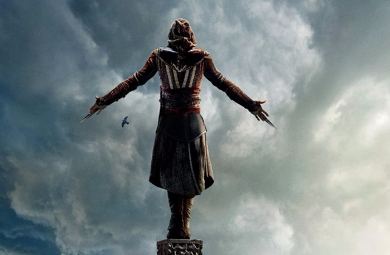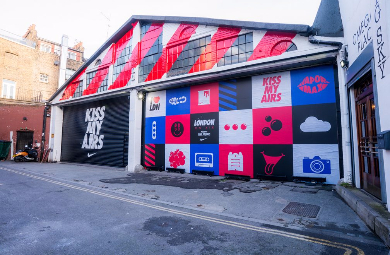
Gen Z and Gen Alpha want brands that understand their passions
Understanding where young audiences spend their time is helpful but understanding passions forms deeper brand audience relationships.
From live to social-streaming


A live experience is one of the most powerful, and most sharable, forms of status currency. Because let’s face it, if you weren’t there, then where were you?
It makes sense that institutions and brands are embracing live-streaming to open up these experiences to a wider audience. For World Ballet Day, the Royal Opera House broadcast 20 hours of non-stop filming from five of the world's top ballet companies, live across the globe. In September, Grey Goose and Chase sponsored Andy Roddick’s U.S. Open Periscope livestream and, every day, Livelist aggregates thousands of free live streamed music concerts and festivals.
But Streaming is not just for huge events. A host of platforms including Facebook Live, Snapchat and Periscope give us a window directly to our fans and followers, whenever we like. When BuzzFeed filmed two people putting rubber bands around a watermelon until it burst, the live video peaked at 807,000 viewers. Last summer, Grazia and Facebook collaborated on a series of live feature broadcasts from Facebook’s London HQ. The most successful was a roundtable debate concerning Brexit, where the format allowed viewers to submit questions over social media and feel like they were an integral part of the discussion.
As viewing habits switch from TV to social, the ability to interact with the content we’re watching will have even more value. YouTube recently introduced Super Chat. If a fan watching a live broadcast wants to stand out from the crowd, they can buy a message that will be highlighted in a bright colour and stay at the top of the chat window for up to five hours.
This form of social-streaming is huge in China. The number of app users topped 325 million at the end of June last year. Similarly to YouTube, video-sharing and live-streaming platforms such as Kuaishou, allow viewers to buy virtual stickers in return for a song or joke, or just to chat. The revenue is split between the app store, the broadcaster, and the live streaming platform. Although the amounts are small, added together they can make a big difference to someone on a low wage.
Alibaba, the ‘eBay of China’, has launched a separate app, Taobao Live, where viewers can watch live broadcasts of sellers describing their merchandise. Content streamed so far includes product reviews, new product launches, and limited-time discounts. To boost their earnings, sellers can also receive virtual gifts for their broadcast.
Live-streaming adds humanness on scale. It can bring brands and individuals closer to their fans, and it can make live experiences available to the masses. It allows us to talk in context, make connections and embrace imperfection. Everyone gets a front row seat.

Made to Move, which launched in September 2016, is the major new brand positioning for Lucozade Sport. Reflecting its ambition to get one million people moving more by 2020, it positions the UK's leading sports drink brand as a champion of movement, encouraging people to get off the sofa and exercise.
A unique piece of out of home - 'Wait Training' – offered the world's first bus stop fitness sessions, encouraging the unsuspecting public to use time spent waiting for a bus as a chance to get moving. A two-way, live digital screen featured a trainer who led people through everything from Zumba to boxercise.
To complement this a series of Made to Move workout sessions hosted by influential sport and fitness stars were streamed live via the Lucozade sport website.
Agency: Grey London, London

At the end of last year Virgin Holidays aired its most ambitious ad to date – a 60 second TV spot streamed live from 18 locations around the world. The campaign involved 90 production crew and was cut live by a gallery director and vision mixer exactly as if it was live TV. Live broadcasts included horse trekking in Maui, snorkelling in the Caribbean and worshiping at a temple in Thailand. The ambitious spot from Virgin Holidays was to promote the company’s long-haul options by showing ‘real people doing authentic things’ and encourage people to #SeizeTheHoliday. The campaign resulted in 16.9 million impressions from its promoted tweets and 838 web searches per minute at 8.20pm when it was broadcast live during the X Factor.
Agency: AMV BBDO, London & ITN Productions, London

To promote the U.K. release of the movie Assassin's Creed, Channel 4 teamed up with Twentieth Century Fox to stage a live 100 foot jump in the ad break of their popular show Humans. The stunt replicated a ‘Leap of Faith’ undertaken by Michael Fassbender's character Aguilar in the movie. The ad was filmed at Millennium Mills, a derelict flour mill in London, and aired in the 100 second break. Prior to it taking place Channel 4 promoted the action with 10 second teaser ads using the tagline "No harness. No CGI. No Going Back."
Agency: The Outfit, London

To celebrate 30 years of the Air Max, Nike built a fully immersive creative space in Central London. Young Londoners were invited to take part in a range of workshops covering photography, interactive design and music production. For those who couldn’t make it, the five day event was streamed live. Workshops were hosted by influential mentors including photographer Olly Burn, video artist Natalia Stuyk and Radar Radio. Attendees learnt new skills to create work inspired by the Nike Air VaporMax. Favourite moments from the week were captured in a magazine that was distributed on Air Max Day.
Agency: XYZ, London

Looks like you need to create a Creativebrief account to perform this action.
Create account Sign inLooks like you need to create a Creativebrief account to perform this action.
Create account Sign in